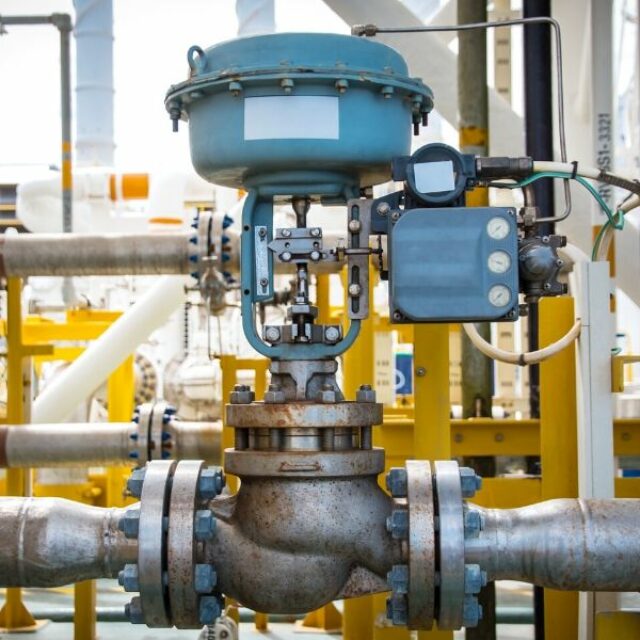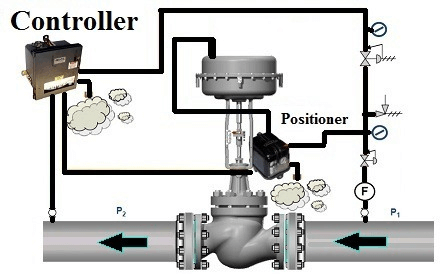How Control Valves Influence Power Effectiveness in Industrial Settings
How Control Valves Influence Power Effectiveness in Industrial Settings
Blog Article

Maximize Energy Cost Savings and Convenience With Advanced Structure Automation Controls
In the realm of modern design and facility management, the integration of advanced building automation controls stands as a crucial improvement. The convergence of modern technology and sustainability has actually birthed a brand-new age where power performance, convenience optimization, and functional streamlining are no more distant goals but possible facts. By harnessing the power of automation, structures can adapt, respond, and progress in methods that were once unimaginable. The capacity for considerable energy savings and boosted convenience is not just an opportunity but a pledge waiting to be met. This paradigm shift in building management holds the essential to opening a globe where environmental conscientiousness and owner health harmoniously exist together within the walls of our frameworks.
Energy Performance Perks
Power effectiveness advantages can considerably decrease power consumption and functional costs in structures. By applying energy-efficient techniques and modern technologies, structure owners and drivers can attain significant savings while likewise contributing to environmental sustainability. One of the primary advantages of improving energy efficiency in buildings is the decrease of utility expenses. Energy-efficient systems, such as innovative structure automation controls, can maximize using resources like cooling, heating, and lighting, resulting in lower power costs gradually.
Additionally, improved power effectiveness can prolong the life-span of structure devices and systems. By running more successfully, cooling and heating systems, light, and various other building components experience less deterioration, resulting in lowered maintenance and substitute costs. Furthermore, energy-efficient structures usually regulate higher residential property values and rental rates, supplying long-lasting financial advantages to proprietors.
Furthermore, energy effectiveness can improve owner comfort and efficiency. Properly regulated interior settings with optimal lights and thermal conditions produce a more positive and favorable workspace, resulting in enhanced employee satisfaction and efficiency. On the whole, the energy performance advantages related to sophisticated building automation controls are multifaceted, encompassing expense financial savings, environmental stewardship, and occupant wellness.
Improved Convenience Control
Enhancing comfort control in structure atmospheres calls for an advanced assimilation of innovative automation systems for optimum resident well-being. By using innovative structure automation controls, facilities can customize the interior setting to fulfill the details demands and choices of passengers. These systems make it possible for specific law of temperature level, ventilation, and illumination, developing a effective and comfy environment. Passenger contentment and efficiency are carefully connected to thermal comfort, making it vital to have systems in position that can adjust to altering problems in real-time.
By integrating these sophisticated controls, buildings can not only enhance convenience but additionally enhance power efficiency by enhancing system procedures based on real occupancy and usage patterns. Inevitably, focusing on owner comfort with advanced automation systems leads to an extra enjoyable and healthier indoor environment.
Functional Efficiency Improvements

In addition, the application of real-time surveillance and analytics tools makes it possible for structure operators to determine power ineffectiveness and functional anomalies immediately. By continuously checking energy usage patterns and system efficiency metrics, changes can be made in real-time to optimize energy intake and ensure peak operational effectiveness. control valves. In addition, including demand reaction strategies into building automation controls can even more improve functional effectiveness by dynamically readjusting power use based upon grid problems and prices signals
Indoor Environment Optimization
Reliable indoor climate optimization is an essential aspect of building automation controls, ensuring owners' convenience and wellness while optimizing energy financial savings. By using innovative sensors and controls, developing automation systems can continuously adjust and monitor temperature, moisture degrees, air top quality, and air flow to develop an ideal interior setting. Preserving comfortable and regular conditions not only boosts resident satisfaction however also enhances productivity and general wellness.
Indoor climate optimization also plays an important role in power performance. By fine-tuning heating, air conditioning, and ventilation systems based upon real-time information and occupancy patterns, constructing automation controls can considerably decrease energy intake - control valves. As an example, executing methods such as demand-controlled ventilation and thermal zoning can assist lessen energy waste while ensuring that each location of the building gets the essential conditioning.

Sustainable Atmosphere Development
Building automation regulates not only maximize indoor environment conditions for energy performance and passenger comfort but additionally lay the structure for producing a sustainable setting with critical management of sources and systems. By integrating innovative building automation technologies, such as sensing units, actuators, and smart software application, facilities can monitor and readjust power use in real-time to reduce waste and reduce their carbon impact. These systems make it possible for predictive upkeep, determining prospective concerns before they rise and enhancing equipment efficiency to enhance durability and efficiency.
Furthermore, sustainable atmosphere development expands beyond power administration to incorporate water preservation, waste decrease, and interior air quality renovation. Building automation controls can control water usage, identify leaks, and ensure appropriate garbage disposal methods, adding to total sustainability initiatives. Furthermore, by regulating and checking air flow and filtering systems, these technologies improve owner health and wellness and efficiency while lowering energy usage linked with heating and cooling operations.
Conclusion
Finally, advanced building automation controls offer significant benefits in regards to power financial savings, comfort control, operational efficiency, interior environment optimization, and developing a lasting atmosphere. By executing these controls, buildings can achieve ideal efficiency while decreasing power intake and improving resident convenience. It appears that the use of advanced automation modern technology is critical in enhancing building performance and creating an extra sustainable future.
Power effectiveness benefits can substantially reduce power intake and functional expenses in structures. Generally, the see post power effectiveness advantages associated with innovative structure automation controls are diverse, including expense savings, environmental stewardship, and occupant well-being.
In addition, incorporating demand feedback approaches into building automation controls can additionally improve functional efficiency by dynamically changing power usage based on grid conditions and rates signals.
Building automation regulates not just optimize indoor climate problems for energy performance and occupant comfort however additionally lay the structure for producing a sustainable atmosphere with calculated monitoring of systems and resources.In verdict, advanced building automation manages deal substantial advantages in terms click over here now of energy cost savings, comfort control, functional efficiency, interior climate optimization, and producing a lasting environment.
Report this page